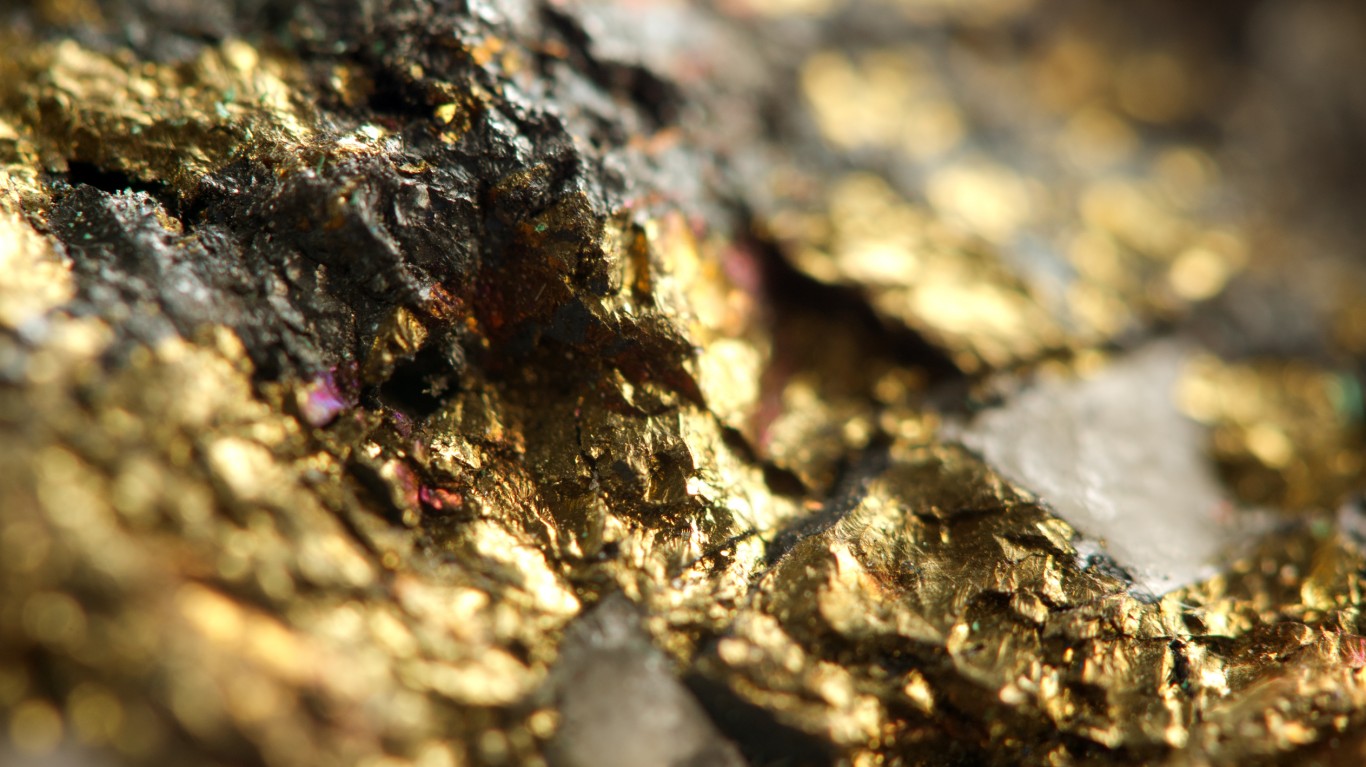Commodities & Metals
What's Next If Gold Miners Run Out of Gold?

Published:
Last Updated:

Barrick Gold Corp. (NYSE: GOLD) on Wednesday reported fourth-quarter and full-year 2019 profits that were better than expected and gave the company’s stock a nice 4% bounce. A 40% increase to the quarterly dividend didn’t hurt either.
On the company’s conference call, CEO Dennis Bristow made a comment that could have sent a shiver up the spine of the entire gold-mining industry. Bristow said, “So it’s generally expected and I’ve certainly been viewing this for a while, that the global production for the gold industry will peak this year or next, and then it’s downhill all the way. We’re forecasting, if you assume, all the announced projects come to fruition, we’ll still be 30% short by 2029.”
According to Bristow, the world will reach peak gold production in 2020 or 2021 and supply will fall 30% short of demand by 2029. The World Gold Council (WGC) warned in 2015 that “peak gold” was approaching and output would begin to decline.
What does that mean for gold prices? Since last May, gold prices have risen by about 20%, mostly on demand from exchange-traded funds (ETFs). The WGC noted last year that rising gold prices were the result of easy-money monetary policy by global central banks, continued geopolitical uncertainty (including the Brexit deadline and strife in the Middle East) and rising turmoil in Congress.
Add those issues to diminishing supply and the price of gold should continue to rise. Or not.
What could be different this time is a surge of interest by some of the world’s central banks in adopting a digital currency. Last June, the International Monetary Fund (IMF) released the results of a survey of the world’s central banks. Of the 96 responses, 20% are “actively considering” issuing a central-bank-backed digital currency.
In the United States, the Federal Reserve announced a FedNow Service last August to create a new service that will enable real-time payments for everyone. While this system does not depend on a digital currency in order to work, the foundation of a real-time payment system will be interbank clearing and settlement, a foundation that Facebook hoped to provide with its Libra digital currency and Calibra payment system.
In announcing the FedNow Service, Fed Governor Lael Brainerd said that one thing was clear: “[C]onsumers and businesses across the country want and expect real-time payments, and the banks they trust should be able to provide this service securely—whatever their size.” Whether Facebook becomes such a bank remains to be seen.
How do faster clearing and settlement services affect central bank demand for gold? The answer to that question may well determine the price of gold over the next decade and beyond. If central banks don’t need more gold, then is there any reason for ETFs to keep buying gold as a store of value? Can a regulated, central-bank-issued digital currency using blockchain technology replace gold as a store of value?
If Barrick’s Bristow is right about the decline in gold production (and if he doesn’t know, who does), it’s not too early to begin wondering about the future of the yellow metal. As production declines, do gold prices rise or is gold going to be replaced (slowly) by something else?
If you’re one of the over 4 Million Americans set to retire this year, you may want to pay attention.
Finding a financial advisor who puts your interest first can be the difference between a rich retirement and barely getting by, and today it’s easier than ever. SmartAsset’s free tool matches you with up to three fiduciary financial advisors that serve your area in minutes. Each advisor has been carefully vetted, and must act in your best interests. Start your search now.
Don’t waste another minute; get started right here and help your retirement dreams become a retirement reality.
Thank you for reading! Have some feedback for us?
Contact the 24/7 Wall St. editorial team.